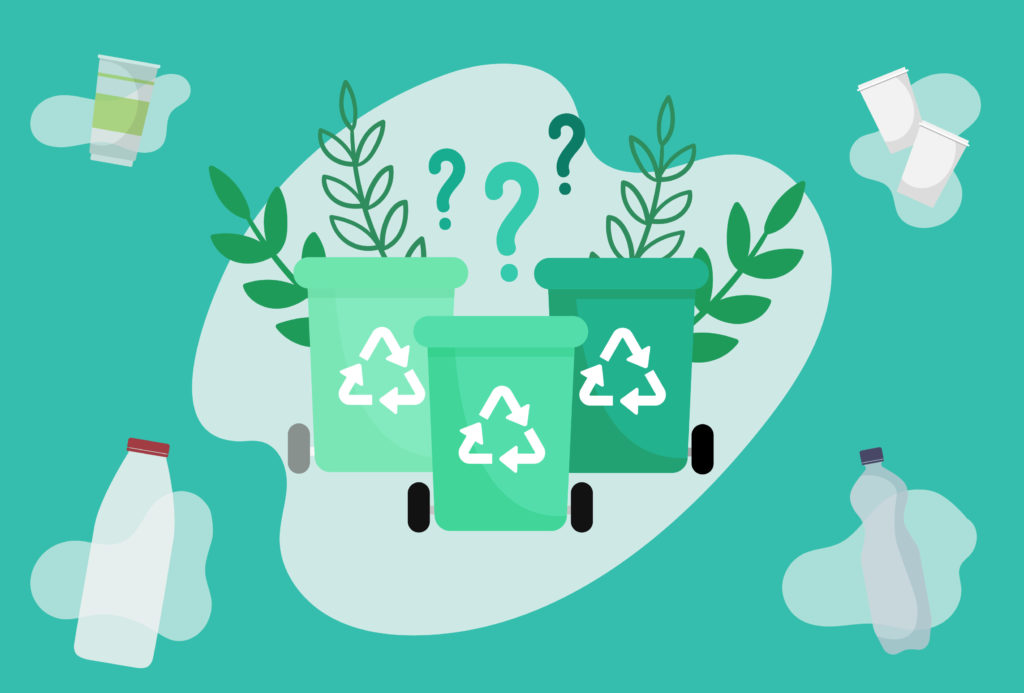You as a consumer make your own daily contribution to sorting waste properly for recycling. But have you ever wondered what are the most recycled plastic materials?
In this article, we explained the symbols identifying the various plastic materials and how each of them is – in their own way – recyclable. However, we do not always pay attention to which kind of plastic waste we collect every day the most so that it can be sent for proper recycling.
In this article, we’ll take you on a useful journey through plastics and their most recycled products!
1. HDPE
First place goes to HDPE (high-density polyethylene) – a precious, rigid and resistant material, which is used in the recycling chain right because it’s resistant and versatile. More and more advanced technologies make it possible to regenerate it exemplary.
This common and versatile material is found in much of the waste you send for recycling, such as bottles for cleansers, shampoos, and detergents, as well as caps – and it can also be used to manufacture many more goods.
Italy, Germany and UK are the countries who recycle the highest percentage of HDPE.
You might as well know its ‘softer’ and more flexible little brother – low density polyethylene aka LDPE, which is suited to the production of packaging film (including the well-known pluriball, which is widely used for damage softening inside packaging.
Along with HDPE, we can’t help but mention PP aka polypropylene, that is another quite rigid and resistant plastic material. When it comes to recycling, it is also very used to make products, such as bottle caps.
2. PET
Second place goes to PET, which is used, for instance, to make plastic bottles for water and soft drinks (aka the most common waste), as well as many non-food containers and various types of packaging. All these products are the most disposed plastic waste from private households.
From recycled PET you can make padding, fleece sweaters and various types of fabrics, as well as, of course, bottles – thanks to bottle-to-bottle recycling.
This material is the most recyclable one, too – indeed, its recycling percentage can reach 100%. Moreover, it can be recycled over and over again.
What about European data? The most PET-recycling country is Norway with 96%; followed by Japan (85%), Sweden (84%), India (80%) and the European Union with 58%. If you want to get more data about plastic recycling in the world, read this article!
Once recycled, PET also makes it possible to obtain the so-called secondary raw material, that is a high-quality material, for its features are similar to the original ones.
3. PVC
Third place goes to PVC – the most versatile and (maybe) best-known plastic material.
Recycled PVC products include packaging film, cosmetic bottles, detergents, accessories for medical use (such as bags and hoses). In particular, PVC is considered as an excellent construction material, for it is especially rigid, unaffected by any mould or microorganisms, as well as a good thermal insulator. Did you know that plastic waste recycling can make a great contribution to building infrastructure, including roads and buildings?
Moreover, recycled PVC is commonly used to make window profiles, vinyl flooring, construction goods, rainwater covering and drainage systems.
PVC recycling is growing in Europe. Over 728,000 recycled tons have been recorded in 2020 and one million is expected to be reached by 2030. In this regard, a great contribution has been made by the Recovinyl programme, whose aim is, indeed, to value a material such as PVC, encouraging its European recycling.
All this is possible also thanks to you! Now you know more about the various waste you help send for recycling and how precious your commitment is when it comes to sort it properly.
If plastic waste can find a new life and protect the environment, that’s also thanks to you!

